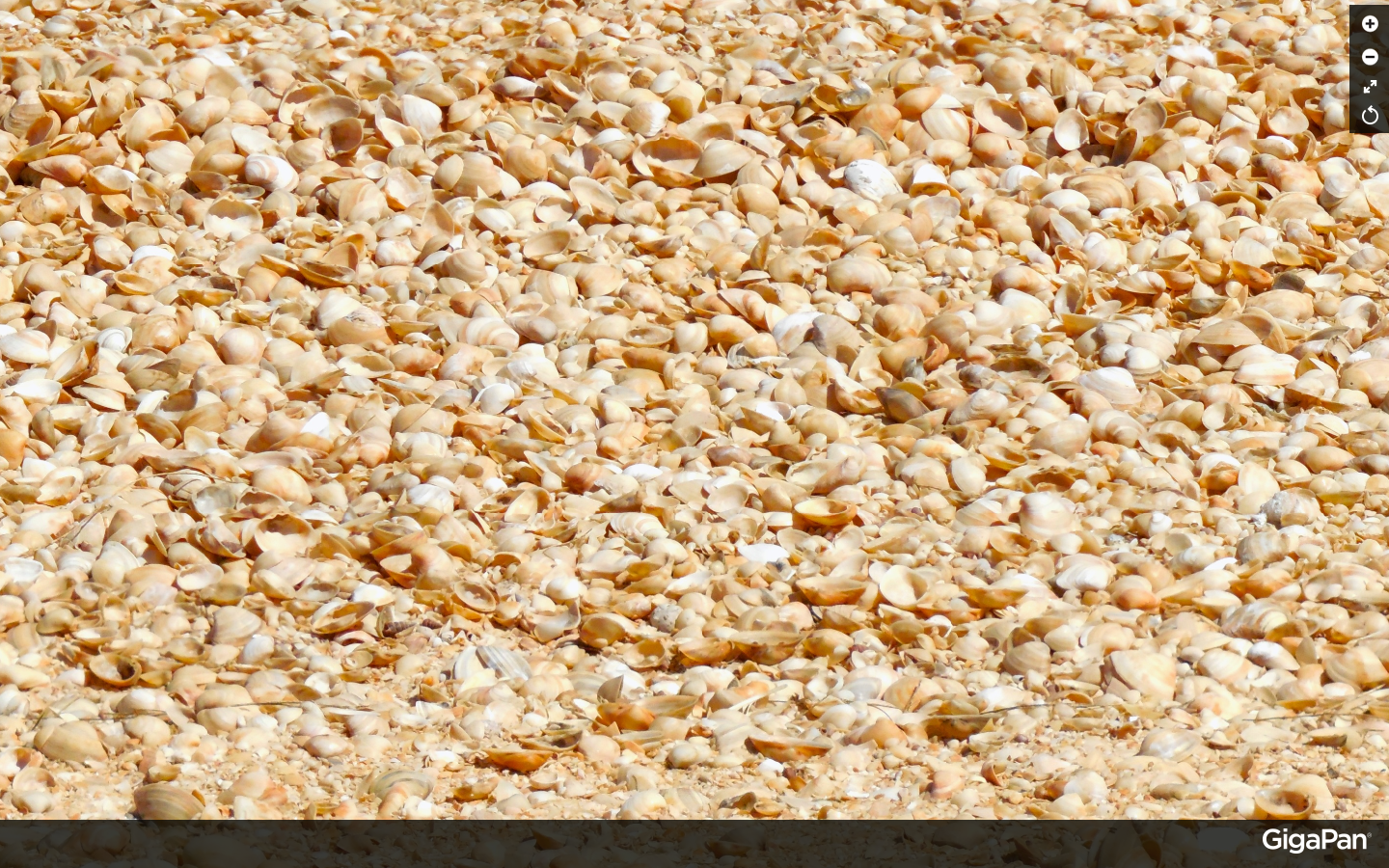 Clam shells in the Colorado River Delta; a screengrab from a Gigapan of the Tower Shoals Chenier in the Colorado River Delta. The same Gigapan is linked from Page 1 of this VFE.
Clam shells in the Colorado River Delta; a screengrab from a Gigapan of the Tower Shoals Chenier in the Colorado River Delta. The same Gigapan is linked from Page 1 of this VFE.Click to show/hide Page 1 contents
• Goals and Objectives
• General Objectives for VFEs
• VFEs across the curriculum
• Using VFEs to foster rich discussion
Click to show/hide Page 2 contents
Why Are There Trillions of Seashells in the Colorado River Delta? The Colorado River Delta Virtual Fieldwork Experience
• Colorado River VFE Objectives
• Background
The Colorado River Delta VFE
Click to show/hide Page 3 contents
• Questions to guide field inquiry
• Productive field inquiry raises new questions
• A photograph is a dataset
• How to look at a specimen
• Consider the most important takeaways
 Clam shells in the Colorado River Delta; a screengrab from a Gigapan of the Tower Shoals Chenier in the Colorado River Delta. The same Gigapan is linked from Page 1 of this VFE.
Clam shells in the Colorado River Delta; a screengrab from a Gigapan of the Tower Shoals Chenier in the Colorado River Delta. The same Gigapan is linked from Page 1 of this VFE.
Explain generally the influence of moving water in a variety of environments upon the deposition of sedimentary particles;
- Describe how changes in moving water over short and long time scales can influence erosion, deposition, and environments;
- Define chenier and explain specifically how cheniers form, including description of how the processes of erosion and deposition contribute to chenier formation;
Describe several ways human activities have changed the Colorado River Delta over the last century.
Propose policy initiatives to appropriately protect, restore, or, if appropriate, leave be, the Colorado River Delta ecosystem and explain the rationale for these initiatives drawing from the available evidence.
Teachers should specify the number of activities required to satisfy the second objective and the level of detail required in the third to suit their curricular needs.
See also the general objectives for VFEs and VFEs across the curriculum and connected to the NGSS on page 1 of this VFE.
On the map the Delta was bisected by the river, but in fact the river was nowhere and everywhere, for he could not decide which of the hundred green lagoons offered the most pleasant and least speedy path to the Gulf. So he traveled them all, and so did we. He divided and rejoined, he twisted and turned, he meandered in awesome jungles, he all but ran in circles, he dallied with lovely groves, he got lost and was glad of it, and so were we.
Aldo Leopold in his essay The Green Lagoons2
This Virtual Fieldwork Experience (VFE) is set up to introduce you to the ecosystem that Leopold explored in 1922 in the Colorado River delta and enable you to examine the various factors (human-influenced and natural) that make it the way it is today. Of course, the VFE won't literally take you down the river to investigate it in the same way that Leopold did, you'll be able to explore the same place and features like the large shell accumulations in the delta known as cheniers. Its not only different because this is a virtual trip and Leopold was there in person, but also because freshwater no longer reaches the sea in most years. The Colorado River delta remains even though the Colorado River itself is usually no longer there.
At the end of this VFE, you should be able to come up with a hypothesis on how the cheniers in the delta formed. Uncover the mystery of how these unique shell accumulations came to be the way they are. Just as at a crime scene, there are no banners or pop-ups proclaiming what is and is not a clue. It's up to you to determine what is relevant and what is not. In doing so, consider how the extended drought in the watershed impacted the river and its delta. See current drought conditions for the region here and conditions in March of 2016 (when drought conditions were severe) here.
Why does the river no longer reach the sea? How else has the delta changed over the last century? Explore the delta! A worksheet with questions specific to the Colorado River Delta is here.
The VFE highlights a range of geologic and biologic processes and raises questions about the interplay of different Earth systems. While helping to teach about the Earth system in the Colorado River delta, it also serves as a model for sharing with others information about an ecosystem and the Earth system processes that influence that ecosystem.
The VFE is in a Prezi that is "Public and Reusable." Thus, users can make their own copies, and, if a particular lesson focuses on only a piece (or only pieces) of the total VFE, it can be customized to meet teacher needs. You can access it directly here.
2 The essay, included in Leopold's classic A Sand County Almanac, is short, engaging, and gives a good sense of what we've lost. If time allows, reading this is recommended before exploring the VFE.